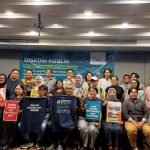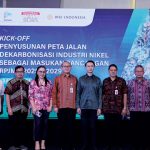Jakarta (Greeners) – Ministry of Environment and Forestry or KLHK denies a report published by Greenpeace stating DKI Jakarta, the country’s capital city, has the lowest air quality level in Southeast Asia, a senior official said on Tuesday (12/02/2019).
“Jakarta is not the worst in terms of air quality compare to [other] Southeast Asia cities. Bangkok is the worst based on World Air Quality Report,” said Karliansyah, Director General for Pollution and Environmental Damages Control, at a press conference in Jakarta, adding that the ministry also measured air quality with standardized tools and method.
READ ALSO: Ministry of Environment and Forestry to Increase Environmental Quality Index in Indonesia
Furthermore, he said that based on the ministry’s data, 34 out of 365 days were recorded as Good, 122 days as Moderate, and 193 days as Unhealthy in 2018.
Meanwhile, between January to February 2019, air quality in Jakarta was recorded Good for ten days, Moderate for 38 days, and Unhealthy for 11 days.
“Greenpeace says Jakarta is the city with worst air quality in Southeast Asia. What method is Greenpeace using? What kinds of instrument? What measuring tools? Because, we are certain that Greenpeace has seen the Air Quality Monitoring System room on the third floor [of the ministry’s building in Kebon Nanas, East Jakarta] which also the Ministry’s measuring tool for air quality throughout the whole city in Indonesia. To measure air quality, you need to standardize all the instruments,” he said.
READ ALSO: Forest and Land Fires Hit 1200 Hectares of Riau Province by February
On March 5, Greenpeace Indonesia published a press release, “Jakarta Ranked First in Southeast Asia for Worst Air Quality”, in its official website which based its finding on the 2018 World Air Quality Report by IQAir Air Visual and “The Most Polluted Cities in the World”.
The report, a collaboration with Greenpeace Southeast Asia which presents PM 2.5 air quality data reveals that Jakarta’s air quality is low in 2018, — South Jakarta reaches 42.2 µg/m3 and Central Jakarta 37.5 µg/m3 –.
It means that PM 2.5 concentration in Jakarta records four times above the yearly safe level based on World Health Organization,10 µg/m3, and the national standard, 15 µg/m3, as stated on the 1999 Government Regulation of Air Pollution Control.
However, Karliansyah argued the data stating that the Ministry of Environment and Forestry has been using PM 2.5 to measure air quality levels in several cities, including Jakarta.
The PM 2.5 measurement tool had been installed since 2016 in areas prone to forest and land fires, such as Palembang, Jambi and Palangkaraya.
“All tools we have installed already using PM 2.5. If compare to the standards of daily air quality for national is 65 µg/m3 and WHO is 25 µg/m3. Meanwhile, yearly standards, WHO is 10 µg/m3 and national is 15 µg/m3. So, based on air quality data in Jakarta, 34.57 µg/m3 is still below national standard [because] we refer to daily standards,” he said.
Dasrul Chaniago, director of air pollution control at the ministry, said the standards to measure air quality are 2.5 to three meters above ground, minimum distance from highway is 15 meters, and static.
“So, the tool is not walking around because the ministry uses all parameters including wind direction. The tools we used are PM 10, PM 2.5, hydrocarbon, CO, SO2, NO2, ozone, rainfall, and sunlight as the standards,” he said. “The whole data of these measurements can be accessed by public for free.”
Meanwhile, Bondan Andriyanu, climate and energy campaigner of Greenpeace Indonesia, said that the ministry has not been transparent with the results of the measurements.
Andriyanu added that Greenpeace is using measurement tools from air visual web and app which can be access by public for free.
“I have asked for ISPU [Air Pollution Standard Index] to DLH [environmental agency], but they did not give it. I, instead, was asked to pay [for the data],” he said. “The tool that we currently use is accessible and free. The ministry had only installed PM 2.5 air quality control during Asian Games, not 2016, and from the data mentioned by Karliansyah, they are all the same as our data, so, it is correct that Jakarta’s air quality is worst. That’s the whole point.”
Reports by Dewi Purningsih



















































